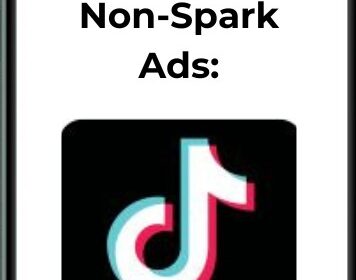Have you mastered the setup of Instagram Shopping and Facebook Shops, but your sales haven’t quite hit the high notes? Wondering how to turn those curious clicks into conversions?
Just like a storefront needs eye-catching displays to entice customers, your social commerce presence needs compelling content to convert casual scrollers into paying fans.
In our previous post, we explored the essential tools and strategies for setting up Instagram Shopping and Facebook Shops. Now, let’s dive deeper into the art of crafting social commerce content that drives sales.
We’ll be focusing on the three key ingredients for success: engaging product descriptions, high-quality visuals, and clear calls to action (CTAs). By mastering these elements, you’ll transform your social media presence into a magnet for customers, boosting engagement and ultimately, your bottom line.
Crafting Engaging Product Descriptions for Social Commerce

Imagine walking into a store where the staff spoke a completely different language. Frustrating, right? The same goes for social commerce. Before you craft captivating product descriptions, it’s crucial to understand your target audience.
Who are you trying to reach? Understanding your ideal customer’s demographics, interests, and pain points is key. Here’s how to get started:
#1. Buyer personas: Develop detailed buyer personas that outline your ideal customer’s characteristics, challenges, and online behavior.
#2. Social media analytics: Utilize the analytics tools offered by Instagram and Facebook to learn more about your existing audience demographics and engagement patterns.
#3. Speak Their Language: Now you know who you’re talking to, tailor your language accordingly.
- Formal vs. Casual: Are you targeting young professionals? Keep your tone friendly and conversational. Reaching parents on the go? Use concise and informative language that speaks to their busy lives.
- Humor vs. Seriousness: Does your brand personality lean towards playful and humorous? Infuse your descriptions with wit. Selling a high-end product? Maintain a professional and sophisticated tone.
#4. Focus on Benefits, Not Just Features: People don’t buy features, they buy solutions. Here’s the difference:
- Feature: This wireless headset has 10-hour battery life.
- Benefit: Listen to your favorite music all day long without interruptions, thanks to the 10-hour battery life of this wireless headset.
See how the benefit-focused description paints a clearer picture and speaks directly to the customer’s desire for uninterrupted listening pleasure.
Let’s take a look at a real-world example. Imagine you’re selling a travel water bottle.
- Generic description: This stainless steel water bottle is perfect for everyday use.
- Engaging description: Stay hydrated on-the-go! This sleek and durable stainless steel water bottle keeps your drinks icy cold for 24 hours, perfect for adventures big and small. Leakproof design ensures your bag stays dry, no matter what life throws your way.
The engaging description uses power words like “sleek” and “durable,” highlights key benefits (24-hour cold retention, leak-proof), and speaks directly to the target audience (travelers and adventurers).
#5. Keep it Short and Sweet: The Art of the Bite-Sized Description
In the fast-paced world of social media, attention spans are shorter than ever. That’s why crafting concise and impactful product descriptions is crucial. Here are some tips:
#1. Aim for around 2-3 sentences:
Social media feeds are flooded with content, so brevity is key. People are more likely to stop and read a concise description than a lengthy paragraph. Think of your description as a captivating headline that entices viewers to click “Learn More” or visit your product page.
Here’s how to achieve this:
- Focus on the essentials: Identify the 2-3 key features or benefits that will resonate most with your audience and prioritize those in your description.
- Eliminate unnecessary words:Avoid filler language and focus on clear, concise sentences that convey your message effectively.
- Active voice is your friend: Use active voice to make your descriptions more engaging and impactful.
#2. Use bullet points to break up text and highlight key features:
While you want to keep your description concise, it’s still important to showcase several key features of your product. Bullet points are a lifesaver in this situation. They:
- Improve readability: Bullet points break up text visually, making your description easier to scan and digest.
- Highlight key features: Bullet points allow you to showcase several features without bogging down the flow of your description.
- Increase scannability: People often scan social media feeds quickly. Bullet points make it easier for them to pick out important information about your product.
#3. Incorporate emojis (sparingly!) to add personality and visual interest:
- Emojis can be a fun way to add personality to your brand voice and grab attention. However, it’s important to use them strategically and sparingly. Here’s how:
- Align with your brand voice: Does your brand have a playful and casual personality? Emojis can be a good fit. For a more sophisticated brand, emojis might not be appropriate.
- Use them strategically: Don’t overload your description with emojis. Choose 1-2 relevant emojis that enhance your message without appearing cluttered.
- Consider your audience: Are you targeting a younger demographic who frequently uses emojis? If not, emojis might not resonate.
#4. End with a clear call to action (CTA):
Your product description should not just inform, it should compel action. A clear CTA tells viewers exactly what you want them to do next, whether it’s “Shop Now,” “Learn More,” or “Visit Our Website.”
Here are some tips for crafting effective CTAs:
- Action-oriented language: Use verbs like “Shop,” “Click,” or “Learn” to create a sense of urgency and encourage action.
- Keep it concise: Your CTA should be short and sweet, just like your description.
- Align with your goal:Is your goal to drive immediate sales or generate website traffic? Choose a CTA that reflects your objective.
By following these guidelines and focusing on the power of bite-sized descriptions, you’ll create compelling social commerce content that effectively captures attention and drives conversions.
#6. Spark Curiosity and Desire: Don’t just tell, tease! Use questions or intriguing statements to pique your audience’s interest and make them want to learn more about your product.
For example, instead of simply stating the size of your travel water bottle, you could ask: “Ready to conquer thirst on your next adventure?” This playful question grabs attention and creates a sense of anticipation.
By following these steps and focusing on the benefits that resonate with your target audience, you’ll craft product descriptions that are informative, engaging, and ultimately drive sales.
The Power of High-Quality Visuals

In the age of instant gratification, captivating visuals are no longer a luxury, they’re a necessity for social commerce success. Attention spans are short, and feeds are flooded with content.
High-quality visuals are the key to stopping the scroll and grabbing the attention of potential customers. Here’s how to ensure your social commerce visuals are top-notch:
#1. Invest in High-Resolution Images and Videos:
Blurry or pixelated images scream unprofessional and can damage your brand image. Invest in high-resolution product photos and videos that showcase your products in the best possible light.
Consider using professional photographers or videographers for a polished look. If budget is a concern, there are plenty of high-quality stock photo and video resources available online.
#2. Showcase Products in Action:
Static product images are good, but showcasing your products in action is even better. This allows potential customers to envision themselves using and enjoying your product.
Here are some ideas:
- Lifestyle photos featuring models using your product.
- Short product demonstration videos highlighting key features and benefits.
- User-generated content (UGC) showcasing real people enjoying your product.
#3. Utilize User-Generated Content (UGC):
UGC, photos, and videos created by your customers, is a powerful tool for social commerce.
UGC builds trust and social proof, as potential customers see real people using and loving your products.
Encourage customers to share their experiences with your brand by running contests or offering incentives for UGC submissions.
#4. Experiment with Different Visual Formats:
Social media platforms are constantly evolving, offering new and exciting ways to showcase your products.
Don’t be afraid to experiment with different visual formats, such as Instagram Stories, Reels, and TikTok videos.
By staying up-to-date with the latest trends and tailoring your visuals to each platform, you can maximize your reach and engagement.
Effective Calls to Action: Tell Your Audience What to Do Next
You’ve crafted captivating product descriptions and showcased your products with stunning visuals. Now it’s time to tell your audience exactly what you want them to do next with a clear and compelling call to action (CTA).
Think of a CTA as the final push that converts a curious scroller into a paying customer. Here’s how to craft CTAs that drive results:
Make Your CTAs Clear and Action-Oriented:
People shouldn’t have to guess what you want them to do after seeing your social commerce content. Here’s how to ensure your CTAs are crystal clear:
#1. Strong Verbs: Replace vague verbs like “See More” with action verbs that leave no room for misinterpretation. Here are some examples:
- “Shop Now” is a classic CTA that encourages immediate purchase.
- “Learn More” is ideal for situations where you want to educate viewers about your product before a sale.
- “Add to Cart” is perfect for CTAs displayed alongside product images or videos.
Tailor Your CTA to Your Goal:
Your CTA should directly reflect your social commerce objective. Here are some examples:
#1. Drive immediate sales: Use CTAs like “Shop Now,” “Buy Now,” or “Get Yours Today.”
#2. Generate website traffic: Opt for CTAs like “Learn More,” “Visit Our Website,” or “Read the Full Review.”
#3. Increase engagement: Encourage interaction with CTAs like “Like This Post,” “Comment Below,” or “Share With Your Friends.”
Keep it Short and Sweet:
Attention spans are short, so keep your CTAs concise and easy to understand. Aim for 2-4 words to maximize impact.
Example:
Imagine you’re a company selling travel backpacks. Here are some clear and concise CTAs for your social media posts:
#1. Image of a stylish backpack: “Shop Now & Explore in Style!” (Drives immediate sales)
#2. Video showcasing backpack features: “Learn More & Pack Smarter!” (Generates website traffic)
#3. User-generated content (UGC) photo of someone using the backpack: “Love to travel? Share your adventures with us! #TravelLight” (Increases engagement)
Create a Sense of Urgency (Optional):
A touch of urgency can nudge viewers towards immediate action. Here are some strategies to consider:
#1. Limited-time offers: Highlight flash sales, exclusive discounts, or limited-edition products to create a sense of scarcity.
Example: “Shop Now! 20% Off All Backpacks for 24 Hours Only!“
#2. Limited quantities: Mention limited stock availability to encourage viewers to act before it’s too late.
Example: “Only a Few Left! Don’t Miss Out on This Amazing Backpack!“
FOMO (Fear Of Missing Out):
Tap into the fear of missing out by using phrases like “Don’t miss out!” or “Limited quantities available!” This strategy can be particularly effective for trendy products or those with a loyal following.
Link to the Right Landing Page:
Don’t let your audience get lost in the clickstream! Ensure your CTAs are linked to the most relevant landing page for your offer.
Example: A “Shop Now” CTA should link directly to the product page on your website, while a “Learn More” CTA might lead to a detailed blog post or product information page.
By incorporating clear and actionable CTAs, potentially adding a touch of urgency, and ensuring a seamless user experience, you’ll transform your social commerce content into a conversion machine.
Conclusion
So there you have it! By focusing on the three key elements – engaging product descriptions, high-quality visuals, and clear CTAs – you can craft social commerce content that stops the scroll, captures attention, and ultimately drives sales.
Remember, social commerce is a continuous journey of experimentation and optimization. Track your results closely, analyze what resonates with your audience, and don’t be afraid to refine your approach as you go. Here are some additional tips to keep in mind:
- Post consistently: Stay top-of-mind with your audience by posting high-quality content on a regular basis.
- Run social media contests and giveaways: Generate excitement and engagement with interactive campaigns.
- Respond to comments and messages promptly: Show your audience you care by fostering a sense of community and providing excellent customer service.
- Utilize social media analytics tools: Gain valuable insights into your audience demographics, content performance, and engagement metrics.
By implementing these strategies and crafting compelling social commerce content, you’ll transform your social media presence into a powerful sales channel, boosting brand awareness, customer engagement, and ultimately, your bottom line.










